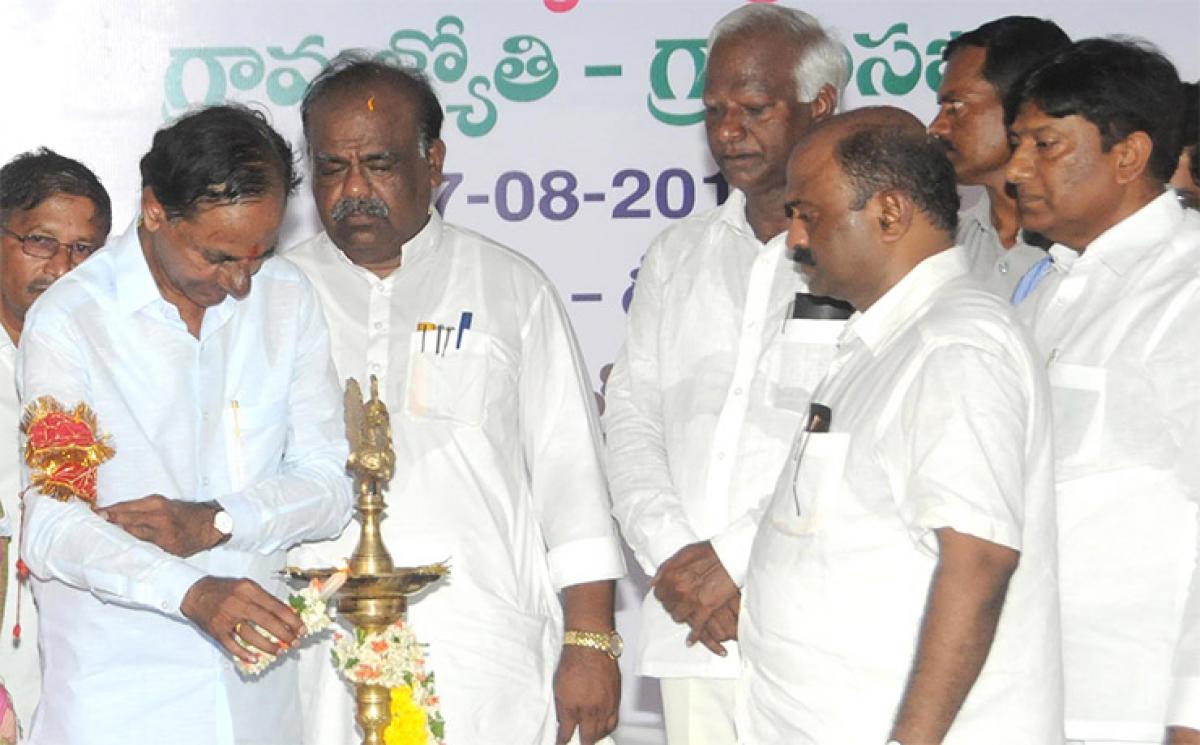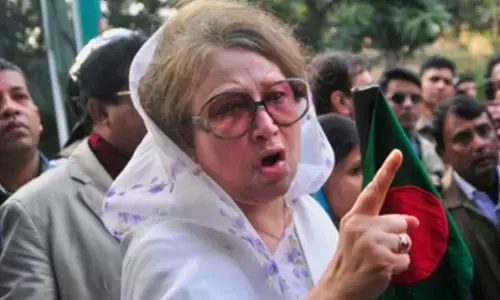Transforming villages

Thanks to the ambitious Grama Jyothi programme launched by the Telangana government, rural development has once again come to the fore. Such rural development programmes are not new.
Thanks to the ambitious Grama Jyothi programme launched by the Telangana government, rural development has once again come to the fore. Such rural development programmes are not new. Despite crores spent, our villages still wear a pathetic look. The recent Socio Economic and Caste Census reveals the ignominious plight of our villages. Telangana is no exception. But, what needs to be done to transform the villages?
.jpg)
The population of the State is predominantly rural with 61.33% of people residing in rural areas. As the Approach paper to 12th Five year Plan said, “expansion of income opportunities in farm sector and progressive absorption of work force into non-agricultural activities is the most potent weapon for reducing poverty.” Even the farm and the non-farm activities can be integrated to augment rural livelihoods and incomes.
For instance, post-harvest operations , maintenance of farm equipment, encouragement to agri processing industry, impetus to agro forestry etc., as observed by Socio Economic Outlook 2015, the Government of Telangana: “As part of reinventing Telangana, agriculture needs to be rejuvenated and made remunerative to arrest rural distress”.
Improving rural infrastructure is vital for accelerating rural economy. Apart from physical infrastructure like rural roads, irrigation facilities etc., main focus is needed on improving social infrastructure like education, health , skill development etc. A majority of rural population in Telangana too derive their income from manual casual labour, according to Socio Economic and Caste Census 2011, indicating the importance of imparting skills to rural youth.
There is a need to localise technical skills in the village and make it self-sustained. Creating a cadre of barefoot engineers or technicians is integral to building locally resident skills for designing, execution and maintenance of rural infrastructure. Development of allied sectors can act as an insurance during times of agrarian distress. For instance, about 4.5 lakh rural families belonging to socially and economically backward classes in the State are involved in sheep & goat rearing. Many such allied sectors like fisheries, forestry etc., can help in ensuring livelihood security to rural population.
Programmes like community forest management, soil & moisture conservation, social forestry, wildlife management, will help in alleviating rural poverty apart from combating climate change. The proportion of households with no adult literates was 29 per cent in rural Telangana, while it was 18.7 per cent at all-India level in 2011-12. The rural Telangana is also reporting higher number of school dropouts.
The ASER 2014 conducted by Pratham found that in Telangana, this issue can be attributed to the employment of children in agriculture and allied activities, especially during harvest season. Access to higher education for rural youth remains a pipe dream. Efforts to improve human development in the villages should be the priority in any endeavor for rural transformation.
The Socio Economic Outlook has rightly pointed out Telangana has a tremendous potential for rural tourism and is a fascinating canvas of myriad colors, cultures and customs. Handicrafts represent, perhaps, the oldest traditions of living culture and Telangana has some of the richest sources of handicrafts. Tourism is considered as an employment-intensive sector. Initiatives for rural transformation should be comprehensive, participatory, self-sustaining .














